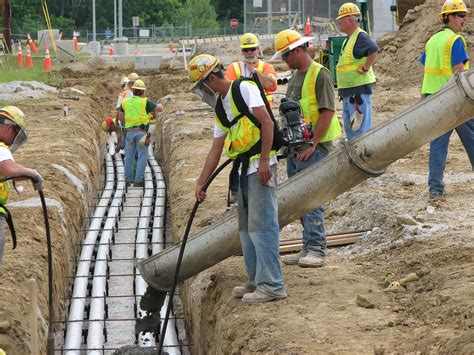Concrete Near Property Line: Safety First!
Pouring concrete, whether for a patio, driveway, or foundation, is a common home improvement project. However, when that concrete work nears your property line, understanding the legal and safety implications becomes crucial. Ignoring these factors can lead to disputes with neighbors and potential safety hazards. This article will guide you through the essential considerations to ensure your project proceeds smoothly and safely.
How Close Can Concrete Be to a Property Line?
This is a frequent question, and unfortunately, there's no single answer. The permissible distance varies significantly depending on your local building codes, homeowner's association (HOA) rules, and even the type of concrete structure being built. Always check with your local authorities before starting any project. Your city or county's planning or building department can provide specific guidelines and may require permits. HOAs often have detailed regulations about landscaping and construction within their communities.
What if I Don't Check Local Regulations?
Failing to comply with local regulations can result in several negative consequences. These may include:
- Stop Work Orders: Your project could be halted mid-construction, incurring additional costs and delays.
- Fines: Significant fines could be levied for violations.
- Legal Disputes with Neighbors: If your concrete encroaches on your neighbor's property, you could face costly lawsuits.
- Demolition Requirements: In extreme cases, you might be required to demolish the offending concrete structure.
Understanding Easements and Property Lines
Before starting any concrete work near your property line, it's vital to understand easements. An easement is a legal right to use a portion of someone else's land for a specific purpose, such as access to utilities. Confirm the exact location of your property line using a survey – this is a critical step to prevent costly mistakes and neighborly disputes. You might need a professional surveyor to accurately determine the boundary.
What About Underground Utilities?
Before digging, always contact your local utility companies to mark the location of underground utilities like gas lines, water pipes, and electric cables. Hitting a utility line can be dangerous and expensive to repair. "Call before you dig" services are available in most regions.
Safety Precautions During Concrete Pouring
Regardless of proximity to the property line, safety should be your top priority during any concrete project.
- Proper Protective Gear: Always wear safety glasses, gloves, and sturdy footwear. Consider a dust mask if you're working with dry cement.
- Safe Lifting Techniques: Concrete is heavy. Use appropriate lifting techniques to avoid injury. Consider using a wheelbarrow or other lifting aids for larger pours.
- Emergency Preparedness: Have a first-aid kit readily available and know what to do in case of an accident.
What if My Concrete Project Damages a Neighbor's Property?
Accidents happen. If your concrete work inadvertently damages your neighbor's property, be responsible and address the issue immediately. Contact your neighbor and discuss the situation openly and honestly. Attempt to reach a mutually agreeable solution for repair or compensation. If you can't reach an agreement, consider consulting a mediator or legal professional.
How Can I Avoid Disputes with My Neighbors?
Open communication is key. Inform your neighbors about your planned concrete project beforehand. This allows them to voice any concerns or questions. Providing a clear timeline for the work can also help manage expectations. Consider offering to keep them updated on progress.
This proactive approach can foster a positive relationship and minimize the risk of disputes. Remember, a little courtesy can go a long way in maintaining good neighborly relations. By prioritizing safety, respecting property lines, and communicating clearly, you can ensure your concrete project is successful and avoids any legal or neighborly complications.

